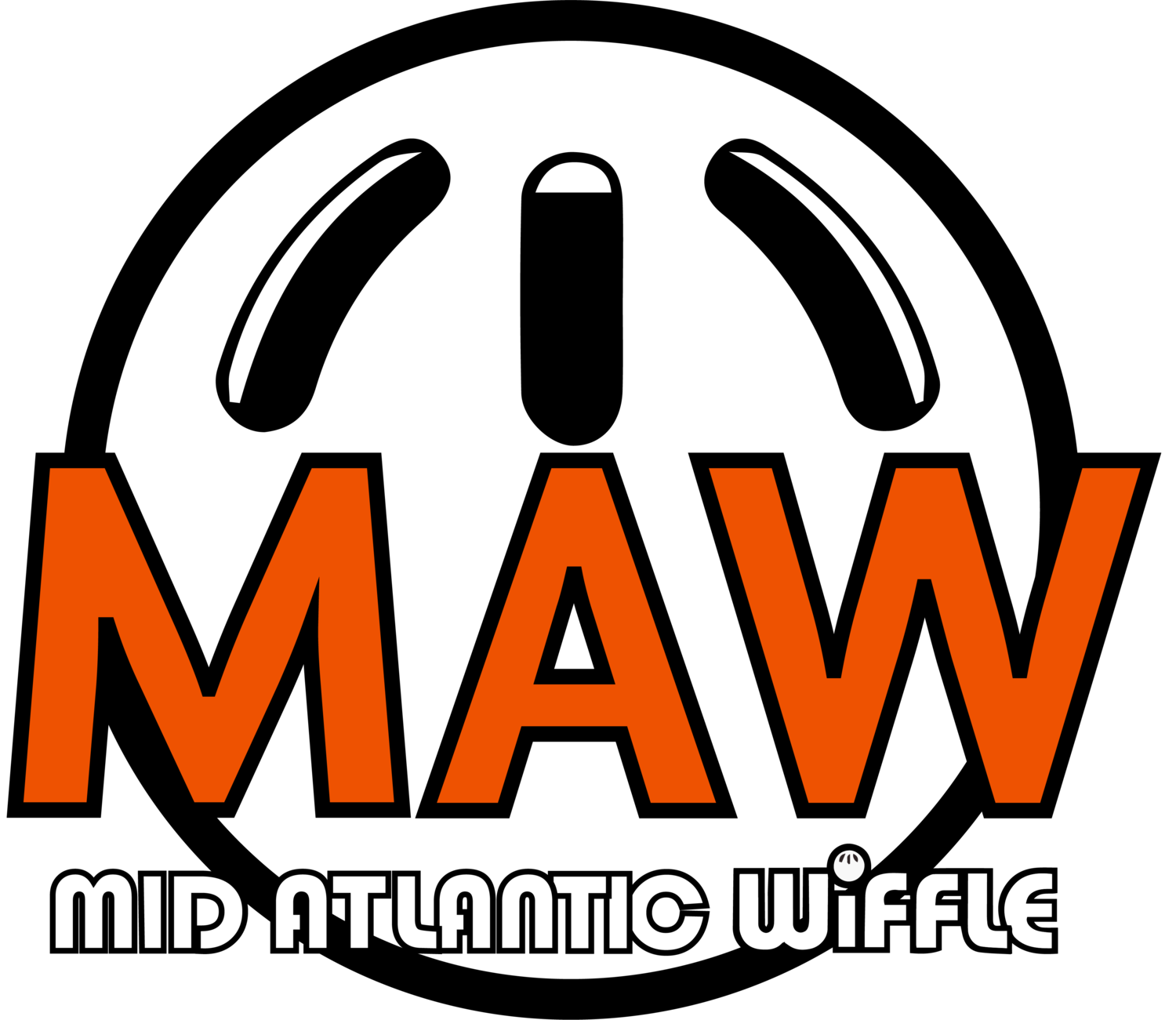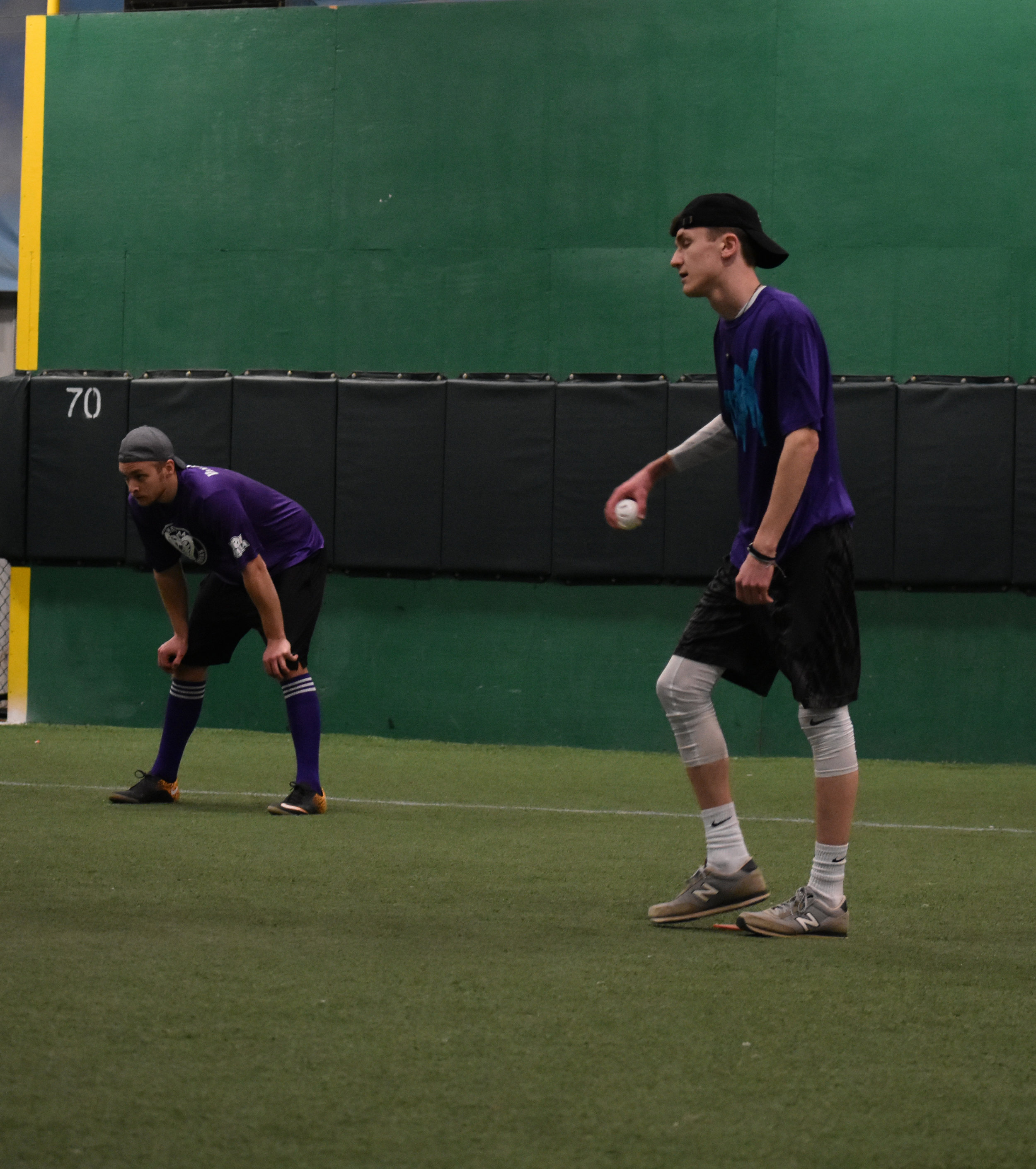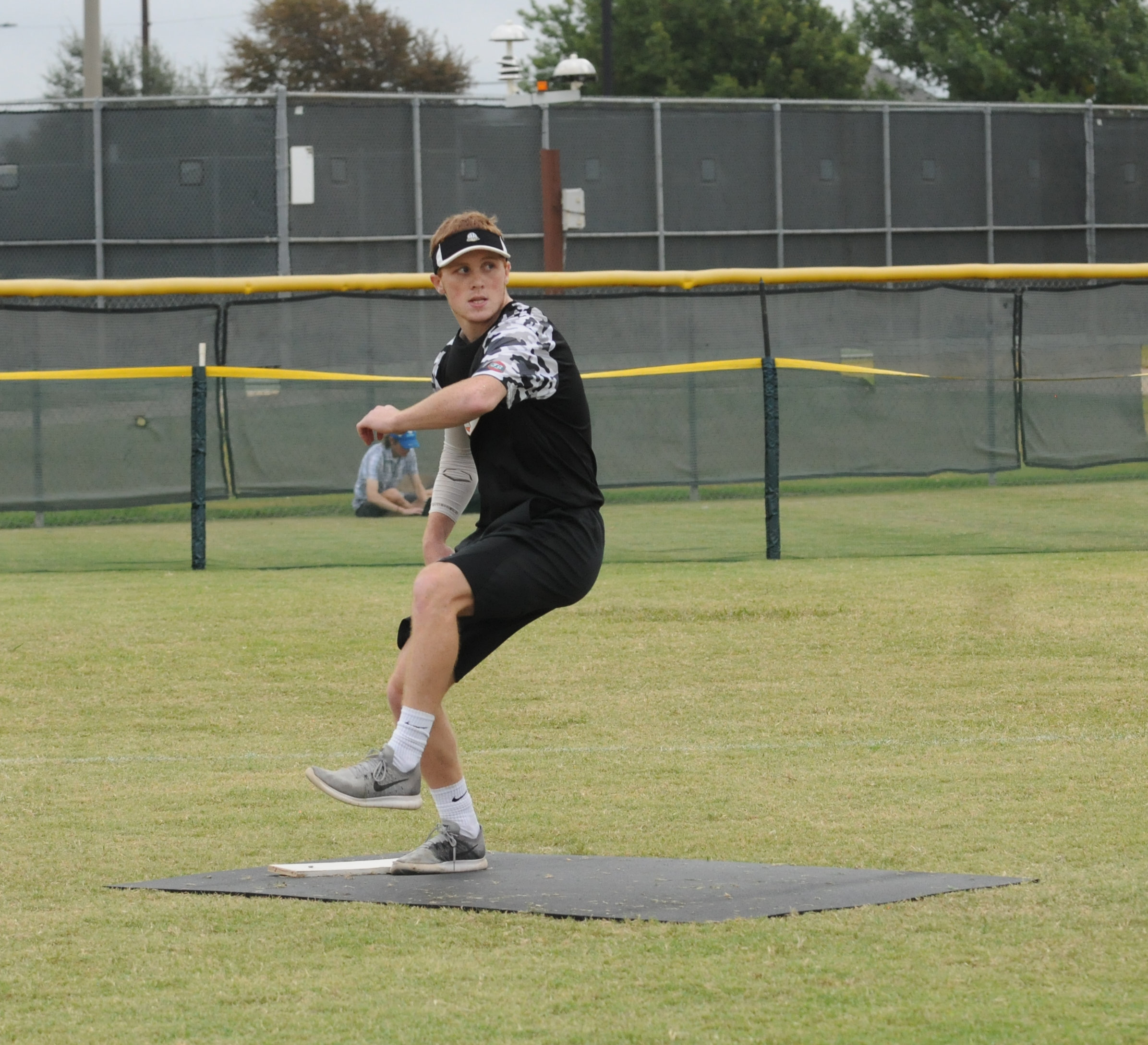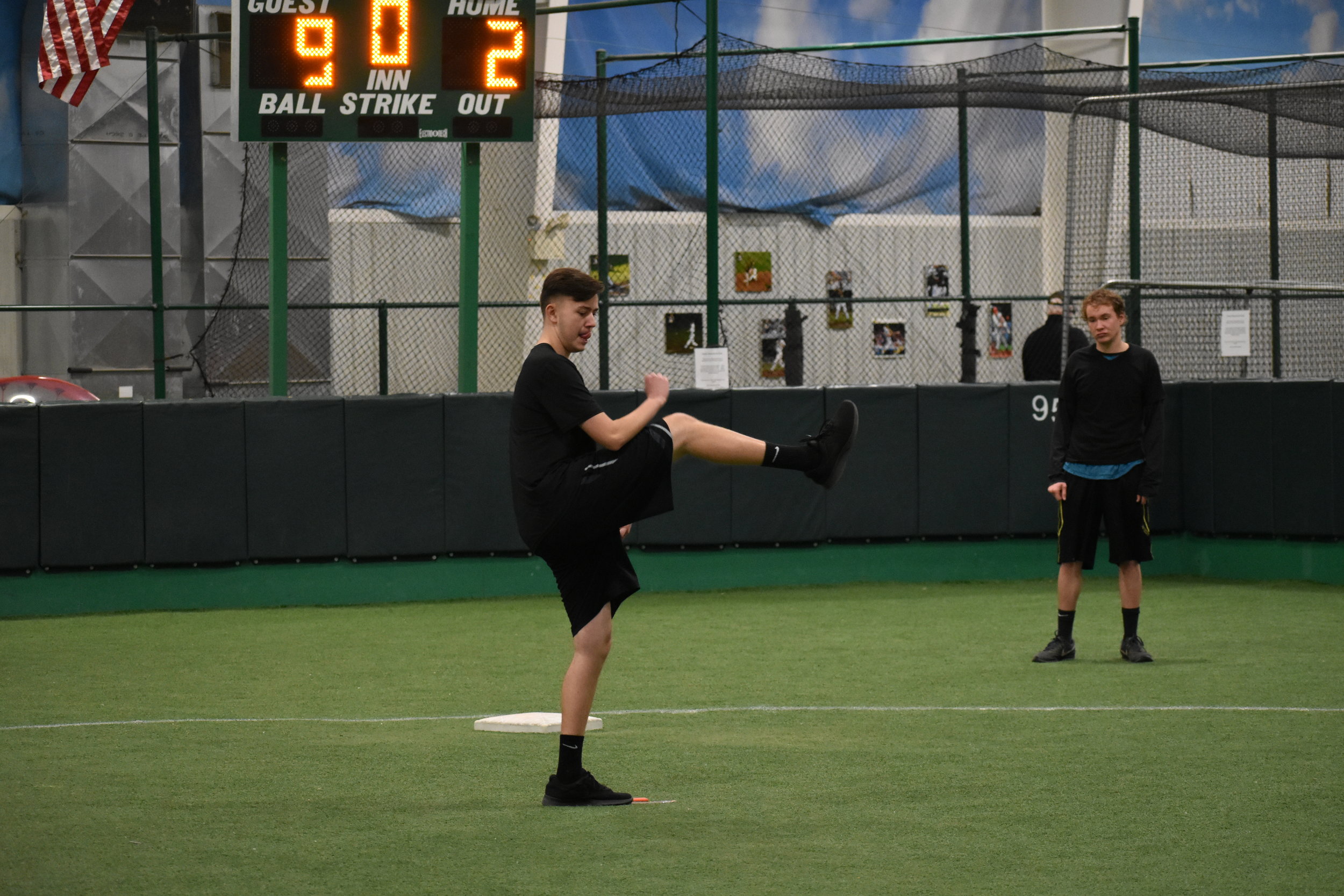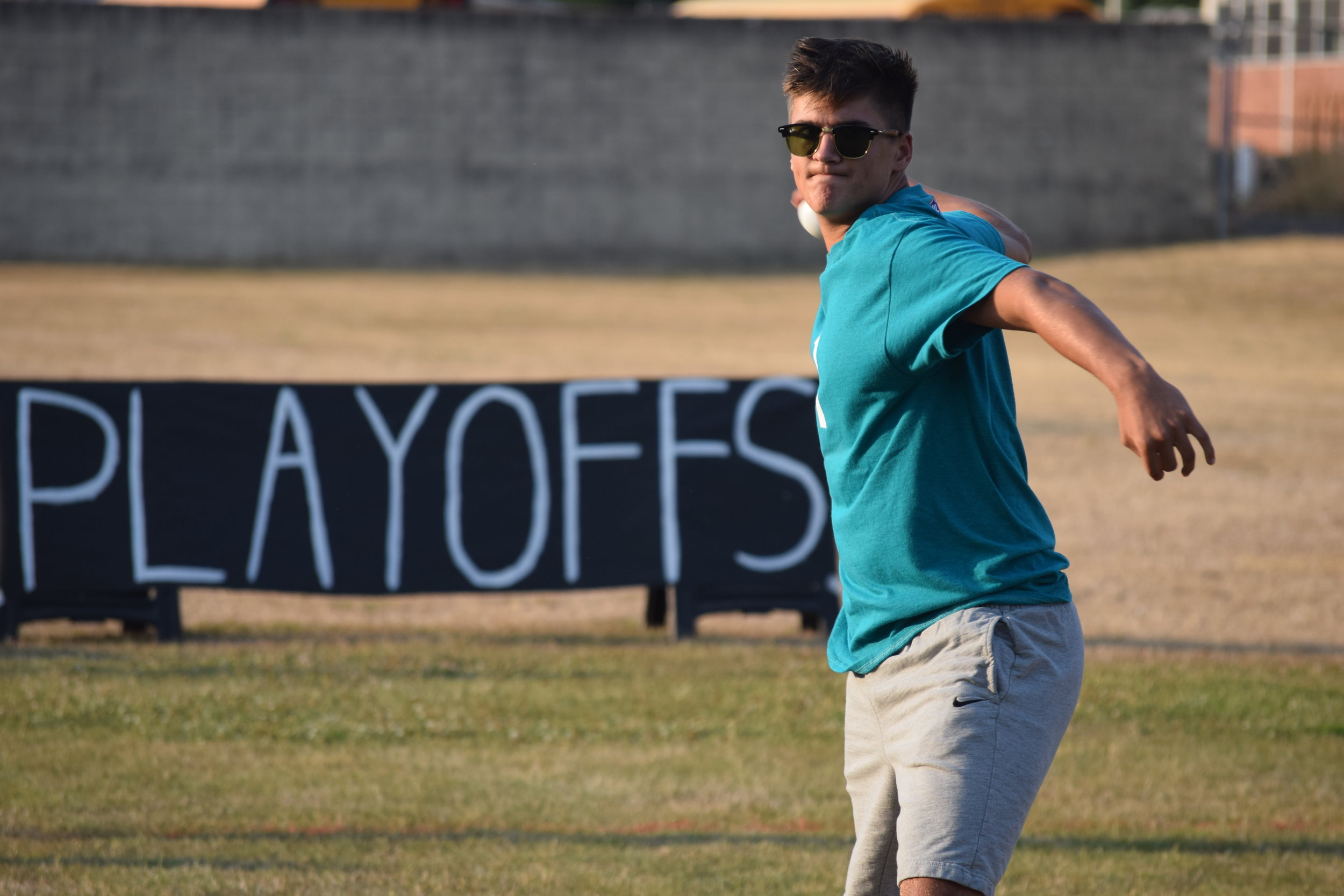Castelli (third from left) at the 2017 Wiffleball Bonanza in Ligonier, PA.
Jordan Castelli might not have the same breadth of Wiffle Ball experience as others we have profiled, but few have as high of a ceiling. Along with Jake Davey, Mike Graziani, and Rob Licht, he is part of a strong core of high ceiling players in western Pennsylvania’s Wiff is Life League.
Castelli is a quarterback on the Division II California University of Pennsylvania football team. The strong and accurate arm required for the quarterback position serves him well on the flat hill. Castelli has a smooth and easy motion. He generates plenty of power with his lower half and the plastic ball jumps out of his hand as a result. His go-to offering is a big breaking ball that better resembles a 12-6 baseball curveball than a traditional Wiffle Ball drop pitch. The pitch is a true plus offering with strong velocity and outstanding break. Jordan has demonstrated the ability to draw swings and misses on the non-scuffed pitch whether he challenges batters over the plate with it or buries it below the zone. At the Wiffleball Bonzana last July, Castelli befuddled opposing hitters relying almost exclusively on that one pitch. He is another young pitcher whom ball selection is not a big deal for. At the Bonzana, he was able to pick up any ball and throw it, without any decrease in velocity or break.
Castelli did not quite achieve the results he hoped for at his first NWLA Tournament last July, dropping a 1-0 game to the eventual champions the WSEM Dads and later suffering a second defeat at the hands of MNWA (4-0). Walks appeared to be his undoing, although that might have been an anomaly. A week earlier at the Wiffleball Bonanza, the 6’1 right-hander pounded the zone with no issues. A third pitch to go along with the curve ball and overhand fastball would help Castelli take that next step on the rubber.
Jordan is one of the best hitters in hitter-friendly WILL. While a learning curve would be expected, there is little reason to believe he can’t turn himself into a strong hitter in an unrestricted speed environment with more reps. If Castelli plays in the MAW Canonsburg tournament this August, it will be interesting to see how he adapts in that environment both on the rubber and at the dish. The sky is the limit.
